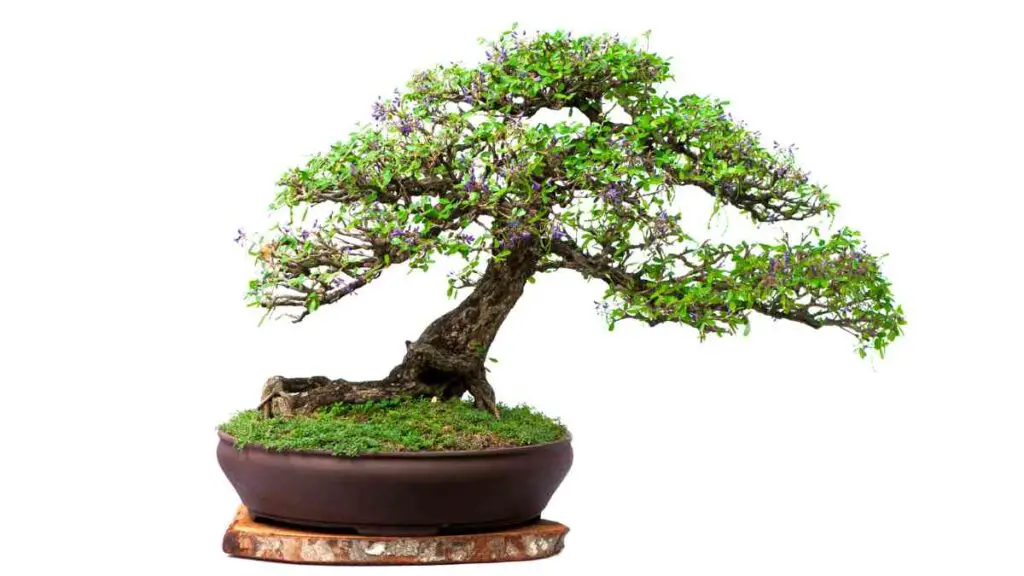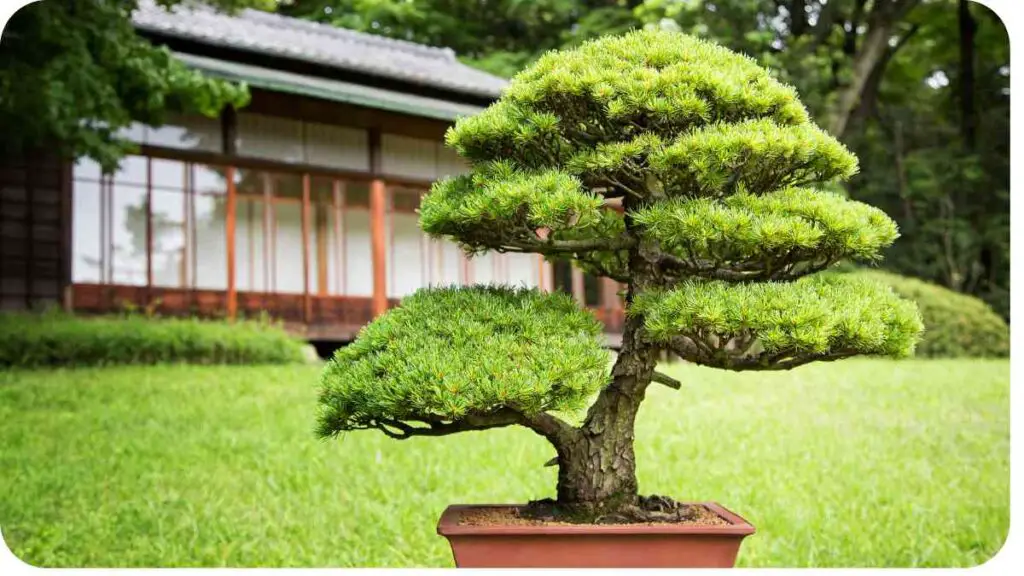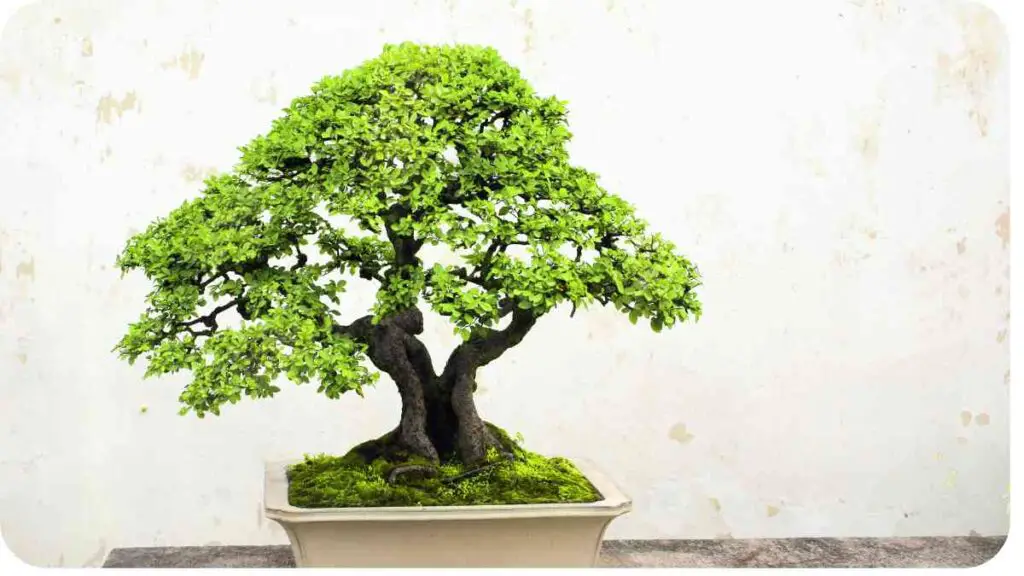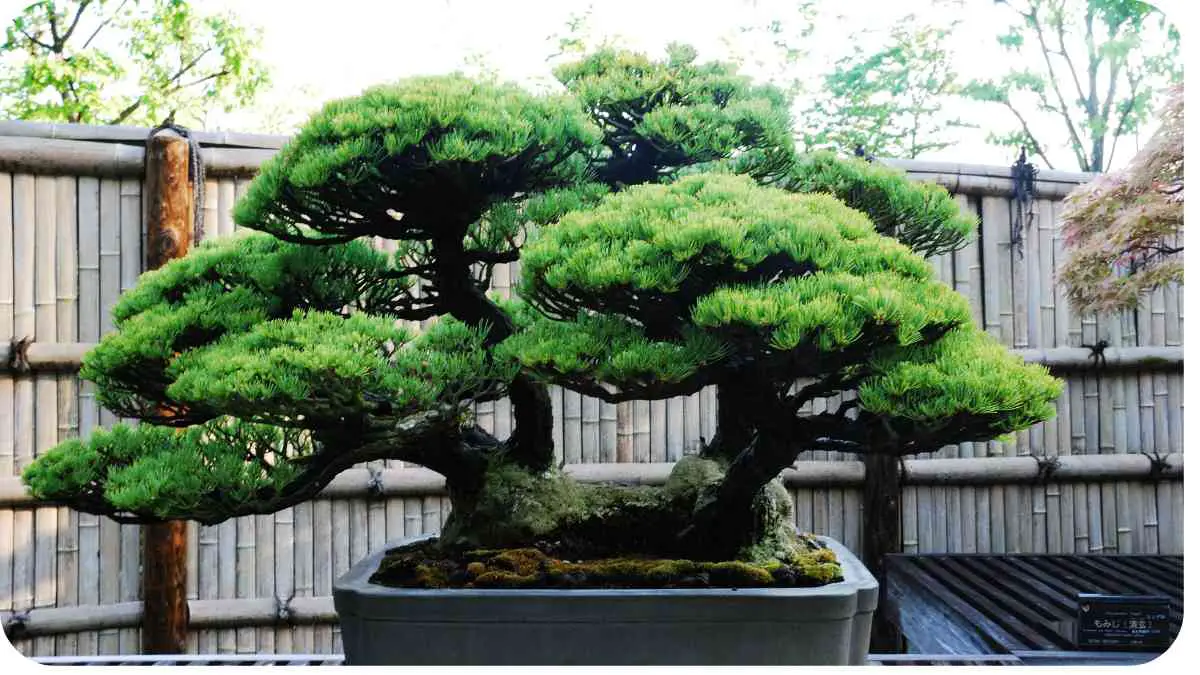Bonsai trees have captivated enthusiasts for centuries, offering a miniature world of natural beauty and tranquility. But have you ever wondered how these tiny marvels are cultivated? In this guide, we’ll delve into the fascinating art of bonsai cultivation, exploring techniques, tools, and tips to help you embark on your own bonsai journey.
| Takeaways |
|---|
| Bonsai cultivation involves careful pruning, shaping, and nurturing to create miniature trees. |
| Choosing the right bonsai tree species and style is crucial for a successful bonsai journey. |
| Essential tools for bonsai cultivation include pruning shears, wire cutters, and concave cutters. |
| Cultivation techniques such as pruning, wiring, and repotting are essential for shaping and maintaining bonsai trees. |
| Proper care, including watering, fertilization, and protection from pests and diseases, is vital for bonsai health and longevity. |
| Visiting famous bonsai gardens can provide inspiration and insight into the art of bonsai cultivation. |
What is Bonsai?

Bonsai, originating from the Chinese term “penzai,” is the art of growing trees and shrubs in miniature form. It involves careful pruning, shaping, and nurturing to create small-scale replicas of full-sized trees. Bonsai trees are cherished for their aesthetic appeal and symbolic significance, representing harmony, balance, and patience.
Delve into the art of bonsai cultivation with our comprehensive guide on bonsai basics and learn how to miniaturize mighty maples for stunning miniature wonders.
Table 1: Common Bonsai Styles
| Style | Description |
|---|---|
| Formal Upright | Straight trunk with evenly spaced branches angled upward. |
| Informal Upright | Slightly curved trunk with asymmetrical branches. |
| Slanting | Trunk slanted to one side, conveying strength and resilience. |
| Cascade | Trunk grows downward, mimicking trees on cliffs or over waterfalls. |
| Semi-Cascade | Trunk partially descends, creating a sense of drama without full cascade proportions. |
| Windswept | Branches swept to one side, as if shaped by prevailing winds. |
| Broom | Branches form a rounded canopy, resembling a broom in shape. |
| Multi-Trunk | Multiple trunks emerge from the soil, representing a miniature forest or grove. |
| Literati | Sparse foliage with a slender trunk, evoking a sense of age and wisdom. |
History of Bonsai Cultivation
The art of bonsai traces its roots back to ancient China, where miniature landscapes known as “penjing” were created. These early practitioners meticulously trained trees and shrubs to mimic the beauty of natural landscapes in miniature form.
Bonsai cultivation further evolved in Japan, where it became deeply intertwined with Zen Buddhism. Japanese artisans refined bonsai techniques, elevating it to a highly respected art form. Today, bonsai is practiced worldwide, with enthusiasts continually innovating and pushing the boundaries of tradition.
Choosing the Right Bonsai Tree

Selecting the perfect bonsai tree is a crucial first step in your bonsai journey. Consider factors such as species, age, and style preferences. Beginners often find success with hardy species like Ficus or Juniper, which are forgiving of beginner mistakes and respond well to shaping techniques.
Discover the transformative power of pruning in our insightful exploration on growth-boosting pruning techniques. Unlock the secrets to enhancing bonsai growth and vitality through expert pruning practices.
Table 2: Common Bonsai Species
| Species | Characteristics |
|---|---|
| Ficus | Indoor-friendly, tolerant of low light and variable humidity. |
| Juniper | Outdoor species, hardy and adaptable to various climates. |
| Pine | Symbolizes longevity and resilience, requires ample sunlight. |
| Maple | Vibrant autumn colors, prefers temperate climates. |
| Elm | Small leaves and delicate branching, suitable for bonsai. |
| Trident Maple | Stunning fall foliage, ideal for creating deciduous bonsai. |
| Chinese Elm | Fast-growing and easy to train, suitable for beginners. |
| Japanese Black Pine | Classic bonsai species, known for its rugged appearance. |
Essential Tools for Bonsai Cultivation
Having the right tools is essential for successful bonsai cultivation. Invest in high-quality tools to ensure precision and minimize damage to your trees. Here are some must-have tools for every bonsai enthusiast:
Table 3: Essential Bonsai Tools
| Tool | Purpose |
|---|---|
| Pruning Shears | For precise pruning of branches and foliage. |
| Concave Cutters | Creates clean cuts, essential for branch removal. |
| Wire Cutters | Cuts wire cleanly without damaging branches. |
| Jin Pliers | Shapes deadwood features for a natural appearance. |
| Root Rakes | Loosens and removes soil during repotting. |
| Bonsai Tweezers | Removes debris and fine-tunes foliage placement. |
| Watering Can | Provides gentle watering without disturbing the soil. |
| Broom | Brushes away loose soil and debris from the surface. |
Cultivation Techniques
Successful bonsai cultivation relies on mastering various techniques to shape and maintain your trees. Let’s explore some essential techniques every bonsai enthusiast should know:
Unveil the mysteries behind bonsai longevity with our revealing insights into the centuries-old secrets of bonsai cultivation. Learn how bonsai trees thrive for generations in tiny pots.
Pruning
Pruning is the cornerstone of bonsai cultivation, allowing you to control the size and shape of your tree. Regular pruning encourages ramification, the development of finer branches, and enhances the overall aesthetic of your bonsai.
Wiring
Wiring is used to bend and shape branches, creating the desired silhouette for your bonsai. Careful wiring allows you to guide the growth of your tree and achieve graceful curves and elegant movement.
Repotting
Repotting is necessary to refresh the soil, prevent root-bound trees, and promote healthy growth. It’s typically done every two to three years for most bonsai species, depending on their growth rate and development.
Table 4: Bonsai Soil Mixtures
| Ingredient | Purpose |
|---|---|
| Akadama | Promotes water retention and aeration. |
| Pumice | Improves drainage and prevents soil compaction. |
| Lava Rock | Enhances aeration and provides stability in the soil mix. |
| Organic Matter | Provides nutrients and improves soil structure. |
| Perlite | Lightweight additive that aids in drainage. |
| Pine Bark | Retains moisture and adds acidity to the soil mix. |
Watering
Proper watering is crucial for the health and vitality of your bonsai. Monitor soil moisture levels regularly and water when the soil feels slightly dry to the touch. Avoid overwatering, which can lead to root rot, and underwatering, which can cause stress and dehydration.
Explore the fascinating world of bonsai survival strategies in our in-depth analysis of centuries-long bonsai endurance. Discover the techniques that enable bonsai trees to flourish in confined spaces.
Bonsai Styles
Bonsai trees are cultivated in various styles, each reflecting different natural landscapes and artistic expressions. Understanding these styles can help you choose the right design for your bonsai.
Table 5: Characteristics of Bonsai Styles
| Style | Description |
|---|---|
| Formal Upright | Straight trunk with evenly spaced branches angled upward. |
| Informal Upright | Slightly curved trunk with asymmetrical branches. |
| Slanting | Trunk slanted to one side, conveying strength and resilience. |
| Cascade | Trunk grows downward, mimicking trees on cliffs or over waterfalls. |
| Semi-Cascade | Trunk partially descends, creating a sense of drama without full cascade proportions. |
| Windswept | Branches swept to one side, as if shaped by prevailing winds. |
| Broom | Branches form a rounded canopy, resembling a broom in shape. |
| Multi-Trunk | Multiple trunks emerge from the soil, representing a miniature forest or grove. |
| Literati | Sparse foliage with a slender trunk, evoking a sense of age and wisdom. |
Common Bonsai Species

Several tree species are popular choices for bonsai cultivation, each offering unique characteristics and challenges. Here are some common bonsai species and their notable traits:
Table 6: Common Bonsai Species
| Species | Characteristics |
|---|---|
| Ficus | Indoor-friendly, tolerant of low light and variable humidity. |
| Juniper | Outdoor species, hardy and adaptable to various climates. |
| Pine | Symbolizes longevity and resilience, requires ample sunlight. |
| Maple | Vibrant autumn colors, prefers temperate climates. |
| Elm | Small leaves and delicate branching, suitable for bonsai. |
| Trident Maple | Stunning fall foliage, ideal for creating deciduous bonsai. |
| Chinese Elm | Fast-growing and easy to train, suitable for beginners. |
| Japanese Black Pine | Classic bonsai species, known for its rugged appearance. |
Bonsai Care Tips
Maintaining the health and beauty of your bonsai requires regular care and attention. Here are some essential care tips to keep your miniature masterpiece thriving:
- Sunlight: Most bonsai species require ample sunlight to thrive. Place your bonsai in a location where it can receive several hours of direct sunlight each day, preferably in the morning or late afternoon to avoid scorching.
- Watering: Proper watering is critical for bonsai health. Water your bonsai thoroughly, ensuring that the entire root ball is saturated. Allow the soil to dry slightly between waterings to prevent root rot.
- Fertilization: Bonsai trees benefit from regular fertilization during the growing season. Use a balanced fertilizer or specialized bonsai fertilizer to provide essential nutrients for growth and development.
- Pruning and Shaping: Regular pruning helps maintain the desired shape and size of your bonsai. Remove any dead, diseased, or overgrown branches to encourage healthy growth and aesthetic appeal.
- Protection from Extreme Conditions: Protect your bonsai from extreme temperatures, strong winds, and frost during the winter months. Consider bringing outdoor bonsai indoors or providing adequate insulation to prevent damage.
Understand the science behind plant strength through our exploration of trimming’s impact on growth. Learn how trimming promotes robust growth and vitality in bonsai and other plants.
Troubleshooting Common Issues
Even with proper care, bonsai trees may encounter various problems. Here are some common issues and how to address them:
Table 7: Troubleshooting Common Bonsai Issues
| Issue | Symptoms | Solution |
|---|---|---|
| Overwatering | Yellowing leaves, soggy soil. | Allow soil to dry out between waterings. |
| Underwatering | Wilting leaves, dry soil. | Water thoroughly and adjust watering schedule. |
| Pests | Chewed leaves, webbing, visible insects. | Treat with insecticidal soap or neem oil. |
| Disease | Discolored or spotted leaves, mold growth. | Remove affected areas and treat with fungicide. |
| Root Rot | Foul odor, mushy roots. | Trim affected roots and repot in fresh soil. |
| Sunburn | Browning or scorched leaves. | Provide shade during the hottest part of the day. |
Famous Bonsai Gardens Around the World
Visiting renowned bonsai gardens can provide inspiration and insight into the art of bonsai cultivation. Here are some famous bonsai gardens worth exploring:
- The Omiya Bonsai Village (Japan): Located in Saitama, Japan, the Omiya Bonsai Village is home to several bonsai nurseries and gardens, showcasing a wide variety of bonsai styles and species.
- The National Bonsai & Penjing Museum (USA): Situated within the U.S. National Arboretum in Washington, D.C., this museum features an extensive collection of bonsai trees from around the world, including Japanese, Chinese, and American specimens.
- The Shunkaen Bonsai Museum (Japan): Founded by bonsai master Kunio Kobayashi, this museum in Tokyo is renowned for its exquisite bonsai displays and comprehensive collection of miniature trees.
- The Bonsai Garden at Lake Merritt (USA): Located in Oakland, California, this public bonsai garden is one of the largest collections of bonsai trees in North America, featuring diverse species and styles.
- The Crespi Bonsai Museum (Italy): Situated in Milan, Italy, this museum houses a remarkable collection of bonsai trees amassed by the Crespi family over several generations, showcasing the beauty and artistry of bonsai.
Conclusion
Bonsai cultivation is a rewarding and meditative practice that allows enthusiasts to create miniature masterpieces of natural beauty. By mastering cultivation techniques, selecting the right tools and species, and providing proper care, you can nurture your bonsai tree into a living work of art.
Whether you’re a seasoned bonsai enthusiast or a beginner embarking on your bonsai journey, may your bonsai adventures be filled with creativity, patience, and joy.
In this guide, we’ve explored the fascinating world of bonsai cultivation, from its ancient origins to modern-day techniques and practices. Armed with this knowledge, you’re ready to embark on your own bonsai journey and cultivate miniature wonders that bring beauty and serenity to your life.
Further Reading
- How Do You Grow Bonsai?: Explore the basics of bonsai cultivation and discover tips for nurturing miniature trees.
- Bonsai Tree Care: The Art of Cultivating Miniature Wonders: Learn about the essential techniques and practices for caring for bonsai trees.
- The Art of Bonsai: Cultivating Tranquility in Miniature: Delve into the artistry and serenity of bonsai cultivation with insights from bonsai enthusiasts.
FAQs
How often should I water my bonsai tree?
Watering frequency depends on factors such as tree species, climate, and soil conditions. As a general guideline, check the soil moisture regularly and water when the top layer feels slightly dry to the touch.
Can I keep my bonsai tree indoors?
Some bonsai species can thrive indoors, provided they receive adequate light and proper care. Species like Ficus and Chinese Elm are well-suited for indoor cultivation.
How do I prune my bonsai tree?
Pruning is essential for maintaining the shape and health of your bonsai tree. Use sharp pruning shears to remove dead, diseased, or overgrown branches, and trim with care to promote balanced growth.
When should I repot my bonsai tree?
Repotting is typically done every two to three years to refresh the soil and prevent root-bound trees. Spring is the ideal time for repotting, as trees are entering their active growth phase.
How can I protect my bonsai tree from pests and diseases?
Regular monitoring and proper care can help prevent pest infestations and diseases. Keep your bonsai tree healthy by maintaining proper watering, fertilization, and pruning practices, and address any issues promptly with appropriate treatments.

For 15 years, Hellen James has worked in the gardening industry as an expert and landscape designer. During her career, she has worked for a variety of businesses that specialize in landscaping and gardening from small firms to large corporations.

